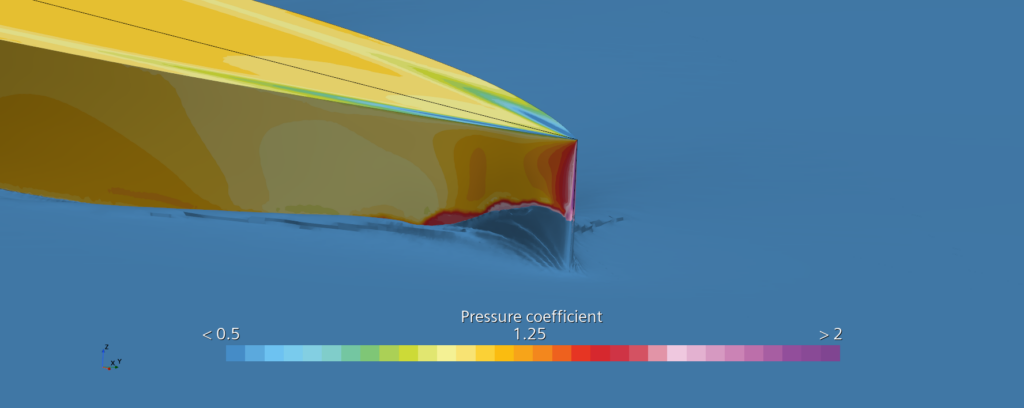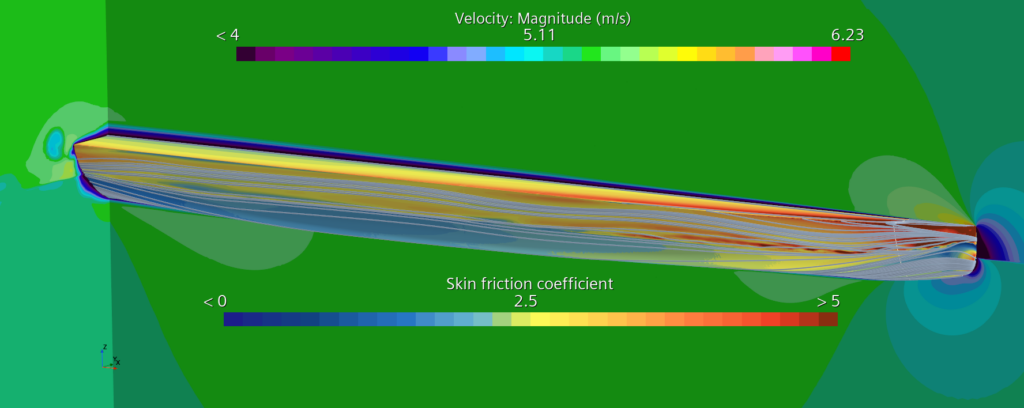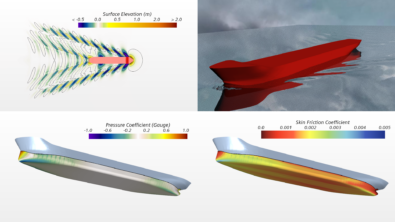Looking back to take a giant leap forward

How a rediscovered 1950s research project is advancing the digitalization of the maritime industry
In engineering, just like in life, sometimes the thing we’re looking for appears when we’re least expecting it.
Back in 2020, I was taking a long trip to carry out sea trials on a cargo vessel, so I downloaded some old journal articles to entertain me on the flight. The intention was purely to keep my mind occupied. Little did I know that it would deliver a key to unlocking new opportunities for the digitalization of the maritime industry.
In one article, I discovered a 1950s project undertaken by engineers at the British Ship Research Association (BSRA) involving a 19th-century paddle steamer and four jet engines. I soon realized this could be the answer to a problem that has troubled digitalization for much of this century.
Full-scale CFD validation
The last couple of decades have seen great progress in engineering digitalization. We’ve built the digital twin of many valuable assets such as aircraft, vessels, factories and shipyards. Key to this is validation – we must be sure that our digital models accurately predict reality.
CFD enables the simulation of flow around ships and structures, helping to find the most optimum and energy-efficient designs. The recent JoRes project included test campaigns on actual seagoing vessels to develop test cases for full-scale CFD validation. While reflecting operational conditions, these test cases did not allow decoupling force components from the hull and propeller. Ideally, we would measure vessel resistance without an operating propeller to understand the flow around the hull when it is not disturbed by a propeller.
But how?
The obvious answer is to tow the vessel with another vessel. But then the subject vessel is sailing in the wake of the towing vessel, not in the open sea. There is no uniform undisturbed flow around the subject vessel.
It’s (75 years) behind you!
For many years, I thought this was an unsolvable puzzle that we would need more time and future technology to solve. So, imagine my surprise when I found the answer in the past.

Unfortunately, we don’t know who came up with the solution, but someone at the BSRA had the bright idea to call the Rolls Royce company to see if they could make Lucy Ashton, a paddle steamer built in 1888, the first and only research vessel equipped with jet engines. Power the ship from above the water and there is no need for propellers or towing vessels to disturb the water flow around the subject vessel.
This unique concept was successfully used in testing during the 1950s and the International Towing Tank Conference recognized its contribution to maritime science. But, by the time CFD began to develop in the 1990s, there was nobody around who was familiar with the experiments that could have been adapted for the early stages of CFD validation.
Shaping the future with a ship from the past
I took the idea to JoRes community and researchers began to develop a new validation test case for full-scale CFD. This year, Chalmers University of Technology launched a global workshop to validate various CFD codes by comparing results with actual measurements taken in 1950.
Such is the excitement around the concept that 46 companies made submissions, making it the largest workshop in the maritime community. More than half of these companies use Simcenter for CFD simulation and on 25 September 2024 they gathered at Chalmers University to discuss the results and shape the future of full-scale CFD validation.



It just goes to show the importance of documenting every experiment we carry out so that future generations may learn from it. Incredibly, over three-quarters of a century after ceasing operation, this old paddle steamer has come back to life in the digital world. And it will help engineers validate the modern digital tools that will be used to design the next generations of ships.
If you want to learn more on this topic, read the article released by Chalmers University.


